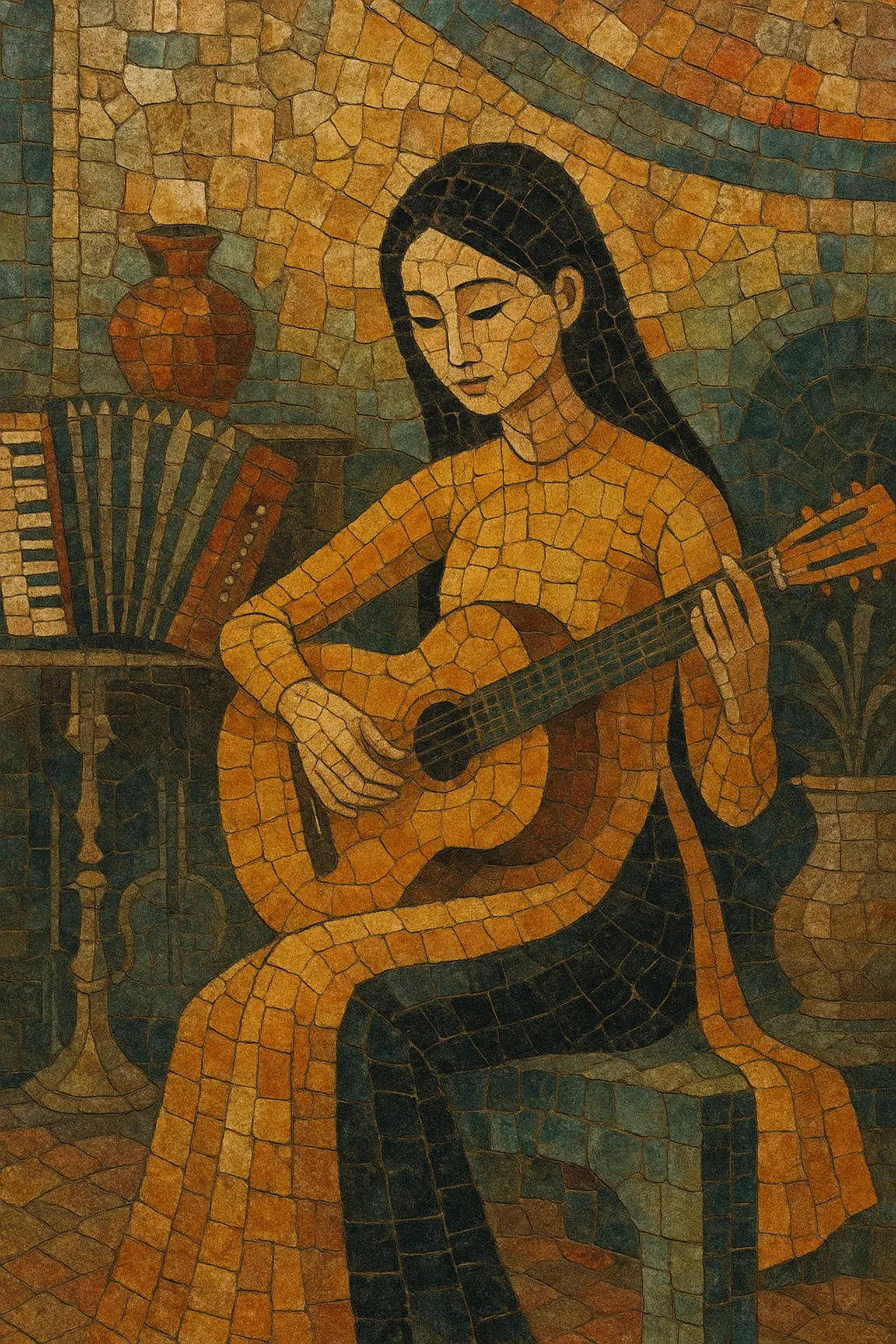Vietnamese bolero is a localized, Vietnamese-language adaptation of the Latin bolero song form that took root in South Vietnam in the 1950s and blossomed in the 1960s. It preserves the bolero’s slow, swaying pulse while softening and simplifying the rhythm into a tender 4/4 ballad feel suited to Vietnamese prosody and ornamentation.
Arrangements typically feature nylon‑string or archtop guitar arpeggios, gentle brushed drums, bass, accordion or harmonium, and lush strings or reed/organ pads. Vocals are intimate and expressive, using vibrato, portamento, and delicate slides characteristic of Vietnamese singing. Harmony is largely diatonic and melodically inclined toward pentatonic shapes, creating a wistful, homespun color.
Lyrically, Vietnamese bolero centers on love, separation, fidelity, and longing for one’s hometown or youth. Its sentimental tone made it a core strand of the broader nhạc vàng ("yellow music") tradition and an enduring emblem of Vietnamese nostalgic balladry.
Latin dance forms and romantic song styles entered Saigon through cosmopolitan nightlife and francophone cultural channels in the 1950s. Vietnamese musicians adapted the Cuban/Spanish bolero’s lilting pace to Vietnamese lyricism, smoothing the syncopation and favoring lyrical, pentatonic‑tinged melodies. Early adopters aligned this new ballad style with pre‑war Vietnamese popular song (nhạc tiền chiến), laying the groundwork for a distinctly Vietnamese bolero idiom.
The 1960s marked the boom of Vietnamese bolero on radio, records, and in dance halls. Prolific composers such as Lam Phương, Trúc Phương, and Vinh Sử wrote emblematic songs that defined the genre’s sound—simple, tender harmonies; lilting guitar arpeggios; and emotive, conversational vocals. Star singers including Chế Linh, Giao Linh, Thanh Tuyền, Phương Dung, Duy Khánh, and Hoàng Oanh popularized the repertoire. Within the broader umbrella of nhạc vàng, bolero emerged as its most recognizable, sentimental thread.
After 1975, the style continued robustly in Vietnamese diaspora communities, where overseas labels and concert programs maintained and expanded the bolero repertoire. Arrangements incorporated electric bass, string machines, and studio reverbs while preserving the signature slow sway and lyrical directness.
Reissues, retrospective concerts, and televised singing competitions sparked a renewed domestic appreciation of bolero in the 2000s–2010s. Younger vocalists revisited classics with faithful arrangements or subtle pop polish, while producers occasionally sampled or reharmonized bolero for contemporary contexts. Today, Vietnamese bolero endures as a living tradition—performed in its classic form, folded into tân cổ giao duyên blends with cải lương elements, and referenced across modern Vietnamese pop culture.


